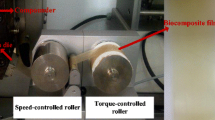Abstract
The current study was undertaken to address the general question of whether there is an environmental advantage for renewable, starch–polyvinyl alcohol (PVOH) biopolymer blends over petrochemical polymers. This was addressed using life cycle assessment (LCA) over a set of multiple case studies based on a consistent set of parameters and methodological background. A group of starch–PVOH blended biopolymers derived from different feedstocks (wheat, potato, maize) were compared with high density polyethylene (HDPE), low density polyethylene (LDPE) and expanded polystyrene (EPS) in a range of applications. The results suggest that a general environmental advantage does not exist for the starch–PVOH blended biopolymers over their petrochemical counterparts in all applications and, instead, a case-by-case approach is necessary to evaluate environmental pros and cons, based on specific comparisons. Overall, starch–PVOH biopolymers were found to offer environmentally superior options to LDPE in thermal packaging applications. However, this was not the case in other applications, where the outcome of comparisons between starch–PVOH biopolymers and HDPE/EPS varied according to various factors, including the specific end-of-life scenarios and the recycled content of the petrochemical polymers. A hierarchy of critical parameters for LCA-based decision-making concerning starch–PVOH biopolymers is suggested as a general outcome of this research.





Similar content being viewed by others
Abbreviations
- AD:
-
Anaerobic digestion
- ALCA:
-
Attributional LCA
- DNDC:
-
Denitrification-decomposition model
- EPS:
-
Expanded polystyrene
- GHG:
-
Greenhouse gas
- GWP:
-
Global warming potential
- HDPE:
-
High density polyethylene
- ISO:
-
International Standards Organization
- LCA:
-
Life cycle assessment
- LCI:
-
Life cycle inventory/life cycle inventory analysis
- LCIA:
-
Life cycle impact assessment
- LDPE:
-
Low density polyethylene
- MSBF:
-
Maize starch based foam
- ODP:
-
Ozone depletion potential
- PE:
-
Polyethylene
- POCP:
-
Photochemical oxidation potential
- PSBF:
-
Potato starch based foam
- PVOH:
-
Polyvinyl alcohol
- WBF:
-
Wheat based foam
References
Shah AA, Hasan F, Hameed A, Ahmed S (2008) Biotechnol Adv 26(3):246–265
Song JH, Murphy RJ, Narayan R, Davies GBH (2009) Philos Trans R Soc B Biol Sci 364(1526):2127–2139
Chiellini E, Corti A, D’Antone S, Solaro R (2003) Prog Polym Sci 28(6):963–1014
Wang XL, Yang KK, Wang YZ (2003) J Macromol Sci Polym Rev C43(3):385–409
Davis G, Song JH (2006) Ind Crops Prod 23(2):147–161
Guan J, Hanna MA (2006) Bioresour Technol 97(14):1716–1726
Shogren RL, Lawton JW, Tiefenbacher KF (2002) Ind Crops Prod 16(1):69–79
Carr LG, Parra DF, Ponce P, Lugao AB, Buchler PM (2006) J Polym Environ 14(2):179–183
Bastioli C (1997) Properties and applications of mater-Bi starch-based materials. In: Symposium H on biodegradable polymers and macromolecules, at the E-MRS 97/ICAM 97 conference. Elsevier Science Ltd., Strasbourg, France
Follain N, Joly C, Dole P, Bliard C (2005) Carbohydr Polym 60(2):185–192
Russo MAL, O’Sullivan C, Rounsefell B, Halley PJ, Truss R, Clarke WP (2009) Bioresour Technol 100(5)
International Organization for Standardization (2006) ISO 14041 Environmental management —Life cycle assessment —Principles and framework. British Standard Institution, London, UK
Shen L, Patel MK (2008) J Polym Environ 16(2)
Murphy R, Bartle I (2003) Biodegradable polymers and sustainability: insights from life cycle assessment. National Non-Food Crops Centre, UK
Estermann R, Schwarzwälder B, Gysin B (2000) Life cycle assessment of mater-Bi and EPS loose fills. COMPOSTO, Swizerland
James K, Grant T (2005) LCA of degradable plastic bags. Center for Design at RMIT University, Australia
Vidal R, Martinez P, Mulet E, Gonzalez R, Lopez-Mesa B, Fowler P, Fang JM (2007) J Polym Environ 15(3):159–168
Murphy RJ, Davis G, Payne M (2008) Life cycle assessment (LCA) of biopolymers for single-use carrier bags. National Non-Food Crops Centre, UK
Wang Y, Gao Y-X, Song J, Bonin M, Guo M, Murphy R (2010) Packag Technol Sci 23(7):363–382
Guo M, Trzcinski AP, Stuckey DC, Murphy RJ (2011) Bioresour Technol 102(24):11137–11146
Guo M, Li C, Bell JNB, Murphy RJ (2011) Environ Sci Technol 46(1):320–330
Guo M (2010) Life cycle assessment (LCA) of light-weight eco-composites. PhD thesis, Imperial College London, London
Shah N (2009) Polyvinyl alcohol production process (personal commnunication). London
Finch CA (1972) Polyvinyl Alcohol: Properties and Applications. John Wiley & Sons Ltd., London, England
Marten FL (2002) Vinyl alcohol polymers. In: Kirk-Othmer Encyclopedia of Chemical Technology. John Wiley & Sons, Inc., New York
Althaus HJ, Chudacoff M, Hischier R, Jungbluth N, Osses M, Primas A (2007) Life cycle inventories of chemicals. In: Ecoinvent report no. 8, v2.02007. EMPA Dubendorf, Swiss Center for Life Cyle Inventories, Dubendorf
Boustead I (2005) Eco-profiles of the European plastics industry. Plastic Europe, Brussels
EUMEPS (2001) Life cycle assessment of industrial use of expanded polystyrene packaging in Europe. European Manufacturers of Expanded Polystyrene, Brussels
European Database for Corrugated Board Life Cycle Studies (2006) European Federation of Corrugated Board Manufacturers, Brussels, European Association of Makers of Corrugated Base Paper, Paris, and European Containerboard Organisation, Brussels
Doka G. (2003) Life Cycle Inventories of Waste Treatment Services. Ecoinvent report No. 13. Swiss Center for Life Cycle Inventories, St. Gallen, Swizerland
Acknowledgments
We would like to thank the Department of Trade and Industry (DTI, now BIS) for financial support for this work through the Technology Programme. We are grateful to all partners in the consortium project led by Greenlight Products Ltd., and Brunel University for their assistance and cooperation with the data and results used in this work. We also wish to acknowledge staff at the National Soil Research Institute at Cranfield University, Broom’s Barn Applied Crop Sciences, Rothamsted Research and Institute of Grassland and Environmental Research for their valuable assistance with the dataset development for DNDC modeling work.
Author information
Authors and Affiliations
Corresponding author
Electronic supplementary material
Below is the link to the electronic supplementary material.
Rights and permissions
About this article
Cite this article
Guo, M., Murphy, R.J. Is There a Generic Environmental Advantage for Starch–PVOH Biopolymers Over Petrochemical Polymers?. J Polym Environ 20, 976–990 (2012). https://doi.org/10.1007/s10924-012-0489-3
Published:
Issue Date:
DOI: https://doi.org/10.1007/s10924-012-0489-3




